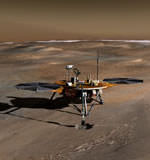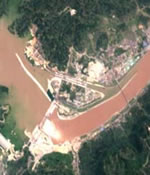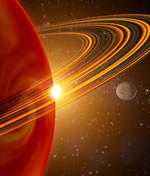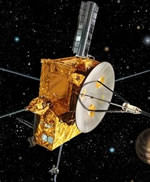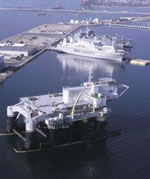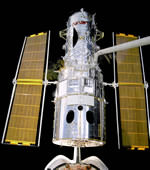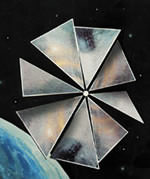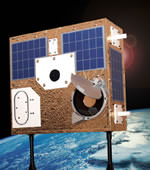
Image credit: CSA
After one month in space, Canada’s Microvariability & Oscillations of STars (MOST) space telescope began operations for the first time last week. A team of engineers and scientists from Dynacon, and the Universities of Toronto and BC issued the command that opens the door, allowing starlight into the sensitive observatory. MOST will measure the oscillation in the light intensity coming from various stars to help determine their composition and age.
After a perfect launch and orbit insertion one month ago, Canada’s first space telescope – called MOST (Microvariability & Oscillations of STars) – opened its eye to the cosmos for the first time last week. Astronomers traditionally call this milestone for a telescope “first light.”
A joint team of engineers and scientists from Dynacon Inc. and the Universities of Toronto and British Columbia issued the command to open the door on the MOST satellite to allow starlight to strike its sensitive electronic detectors. A star image obtained immediately after this operation confirmed that the optics and electronics are performing well.
MOST Mission Scientist and UBC astronomer Dr. Jaymie Matthews was elated at this successful operation: “One of my worst nightmares was having our superb instrument blind behind a stuck door. This is just another in a series of successful milestones which are a testament to the skills of all the Canadian hardware and software engineers on the MOST team.”
The Canadian Space Agency’s MOST space mission is designed to detect tiny vibrations in starlight and reflected light from planets outside the Solar System. These signals will enable Canadian astronomers to be the first to probe both the hidden deep interiors of stars and the outer atmospheres of mysterious extrasolar planets.
“With MOST, we will finally be able to determine the dynamic composition of stars,” said Steve Torchinsky, scientist with the CSA’s Space Astronomy Program. “Furthermore, since MOST is able to see the light reflected from planets and to record minuscule variations in luminosity, this will provide us with data we never had access to before, since no other telescope – not even Hubble – is capable of collecting this type of information.”
Despite such lofty goals, the MOST satellite has been dubbed the “Humble Space Telescope” because it’s just the mass and size of a suitcase. Its price tag is modest too: only about $10 million. To accomplish science that’s normally the domain of observatories 50 times larger and tens to hundreds of times more expensive, the MOST project has adopted a new approach to space science, as part of the Canadian Space Agency’s Small Payloads initiative.
Packed in the MOST space suitcase are new stabilising technologies from the Canadian aerospace firm Dynacon Inc., innovative microsatellite designs by the SpaceFlight Lab of the University of Toronto Institute for Aerospace Studies (UTIAS), and unique optics and electronics developed at the Department of Physics & Astronomy of the University of British Columbia (UBC).
MOST was launched from the Plesetsk Cosmodrome in northern Russia on 30 June 2003, entering orbit perfectly. It now circles the Earth every 100 minutes, pole over pole, at an altitude of 820 km. Since orbital insertion, the MOST team has been carefully activating and testing the satellite systems. The satellite was oriented so the telescope opening – still covered by a door to protect it from harmful direct sunlight – was pointed safely away from the Sun. Last Tuesday, MOST team leaders all agreed it was safe to open the door, built by Routes AstroEngineering Ltd. in Ottawa, Ontario.
At the moment, the MOST satellite is in its coarse pointing mode, looking towards the constellation Capricorn. The next step in the mission will be to activate the fine pointing system and redirect the telescope to a pre-selected target star for calibration. Routine scientific operations could begin within a few weeks, and the first public announcement of scientific results is anticipated in the fall.
Original Source: CSA News Release

